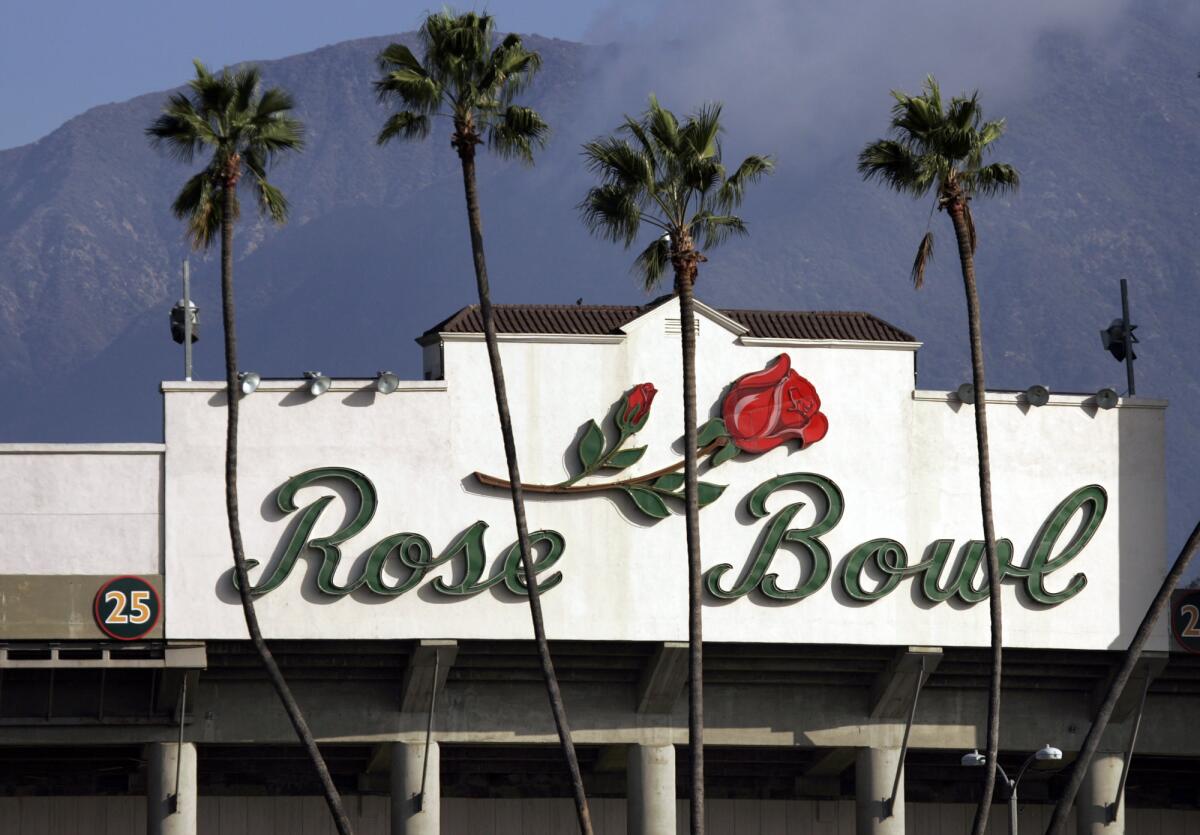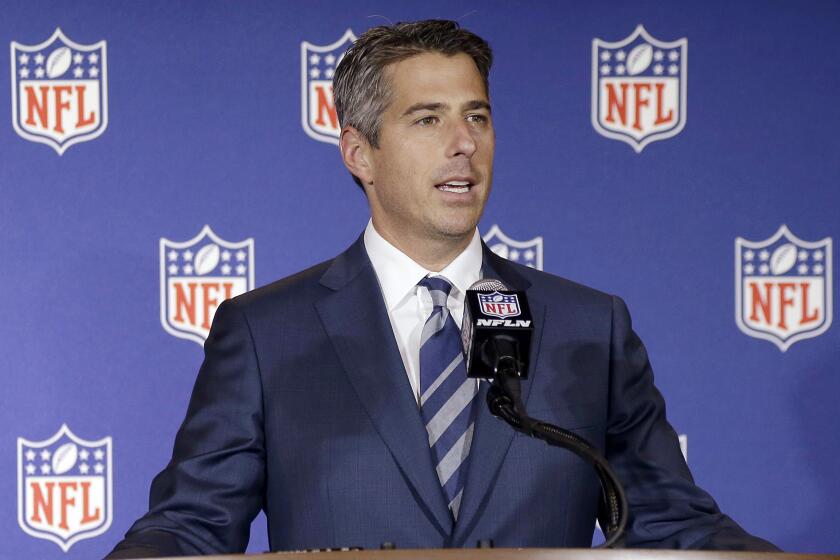Rose Bowl facing lost revenue and uncertain financial future

- Share via
Rose Bowl executives knew this would be a difficult year. Another disappointing football season translated into swaths of empty seats at UCLA games, there were bills to pay from a major renovation and new competition from SoFi Stadium across town.
Then came the coronavirus shutdown.
“We were not planning on COVID, for sure,” general manager Darryl Dunn said. “It came at a challenging time.”
As a result, the Southern California landmark is facing tens of millions in lost revenue and an uncertain financial future. On Monday, the Rose Bowl Operating Company, which runs the city-owned venue, received $11.5 million in stop-gap funding — and a warning — from the Pasadena City Council.
“We have a massive debt from the Rose Bowl and the city is going to have to figure out how to fill that gap,” vice mayor Tyron Hampton said. “The facility has to make serious changes.”
State campgrounds begin to reopen in wake of COVID-19 pandemic and public demonstrations
The scope of the situation remains unclear, if only because no one knows how reopening will proceed. Dunn said the pandemic could mean as much as $20 million in lost revenue and leave his operating company millions in the red by this time next year.
But the roots of the problem predate COVID-19. Knowing an NFL franchise — and a shiny, new venue — eventually would come to Los Angeles, the Rose Bowl embarked on a $183-million remodel that stretched from 2005 to 2016. The $11.5 million approved this week, which was taken from city reserves, will go toward servicing that debt.
A shifting marketplace has hurt, with three large stadiums now in the greater Los Angeles area and concert business gravitating toward SoFi.
College football has not been as profitable as in the past.
“You’re seeing changes in overall trends,” said David Carter, an associate sports business professor at USC. “Getting people to turn out for college football games is a real challenge.”
That has been especially true with UCLA, which has struggled on the field and finished last season with an average attendance of 43,848, the lowest since the team moved into the stadium in 1982.
Fewer fans mean less in parking and concession revenue.
Even if health officials allow for large gatherings at some point this fall, social distancing might put 50% or more of the seats out of play, though Carter notes: “I’m not sure a 50% threshold is going to matter for UCLA games.”
As for other big-ticket items such as concerts, the professor believes the marketplace is large enough keep three stadiums busy, but adds: “The competition will be fierce.”
City officials have expressed concern about the size of the Rose Bowl staff, which Hampton refers to as “administrative bloat.” Some cuts are in the works while the venue explores smaller ways to generate revenue.
Casey Wasserman, leader of the sports and entertainment division of an L.A. county task force, authored the plan along with all nine major pro sports teams.
The property affords room for half-marathons, charity events and pop-up drive-in theaters. Miniature golf might be added. At the adjoining Brookside Golf Club, where business has lagged, fees will be restructured.
“Those things can add up,” Dunn said.
At this point, no one is talking about shuttering the historical site. That might change if finances don’t improve.
“The city has to determine the trade-offs,” Carter said.
“It’s the pride and prestige of having the Rose Bowl versus the economic cost.”
More to Read
Go beyond the scoreboard
Get the latest on L.A.'s teams in the daily Sports Report newsletter.
You may occasionally receive promotional content from the Los Angeles Times.









